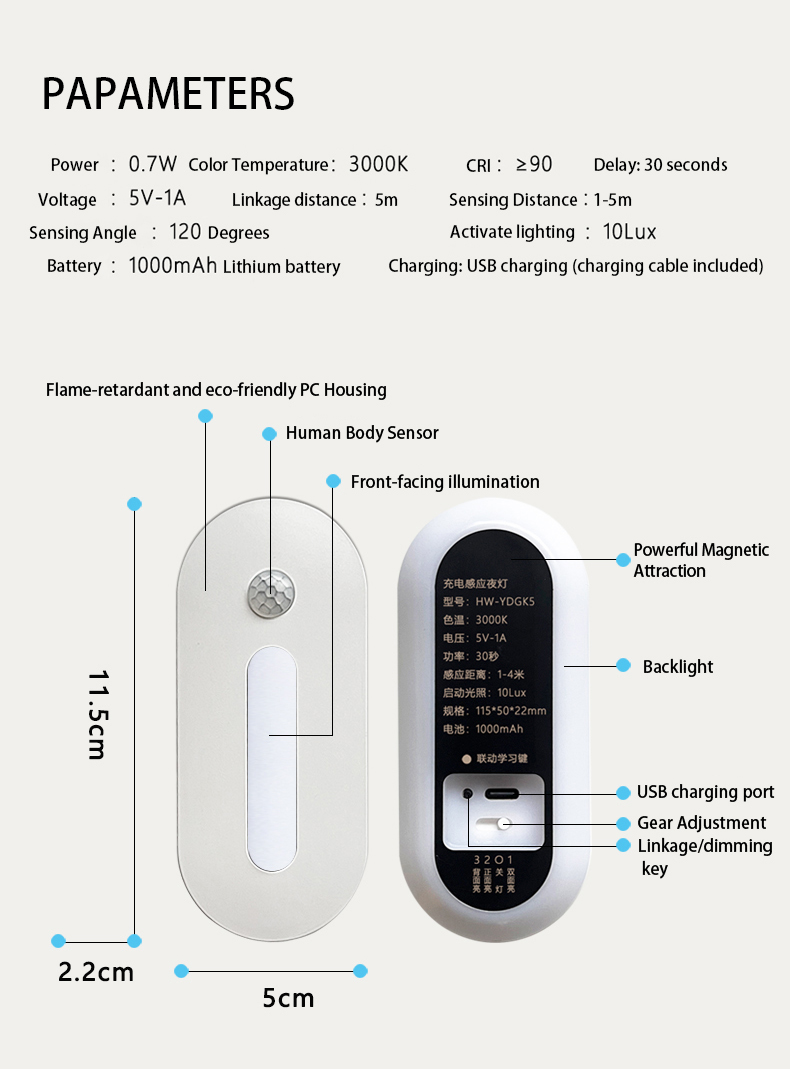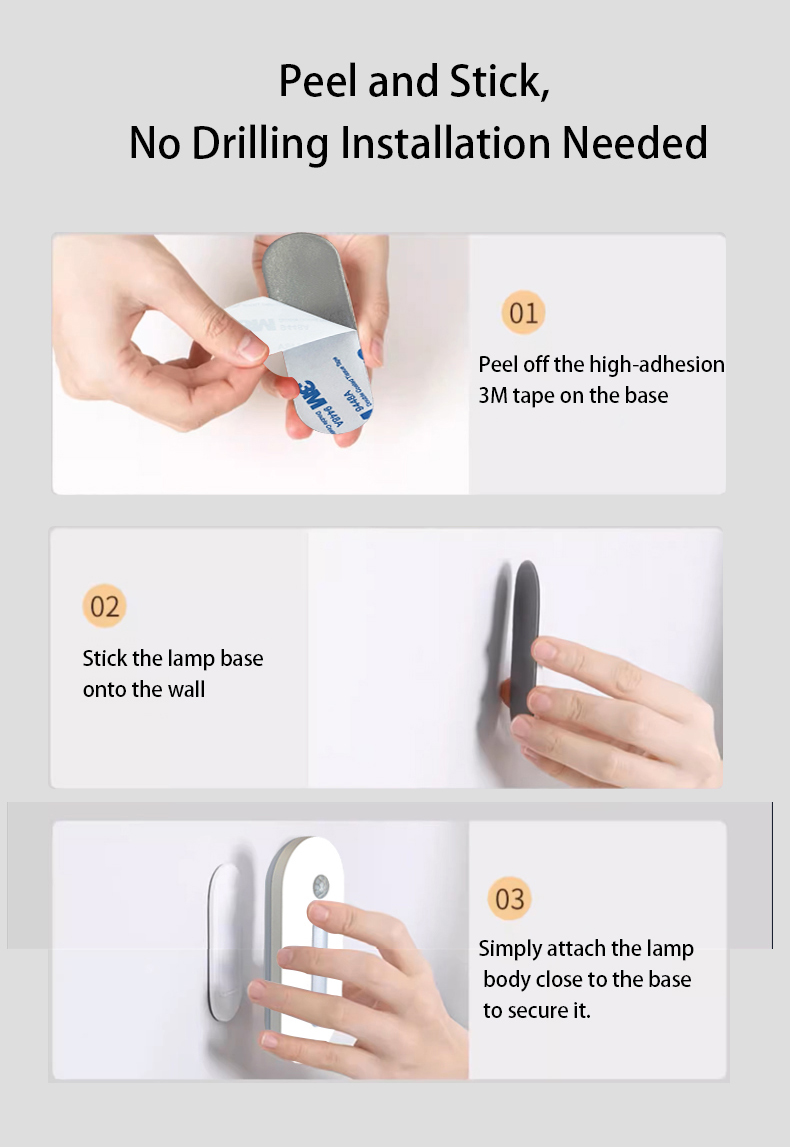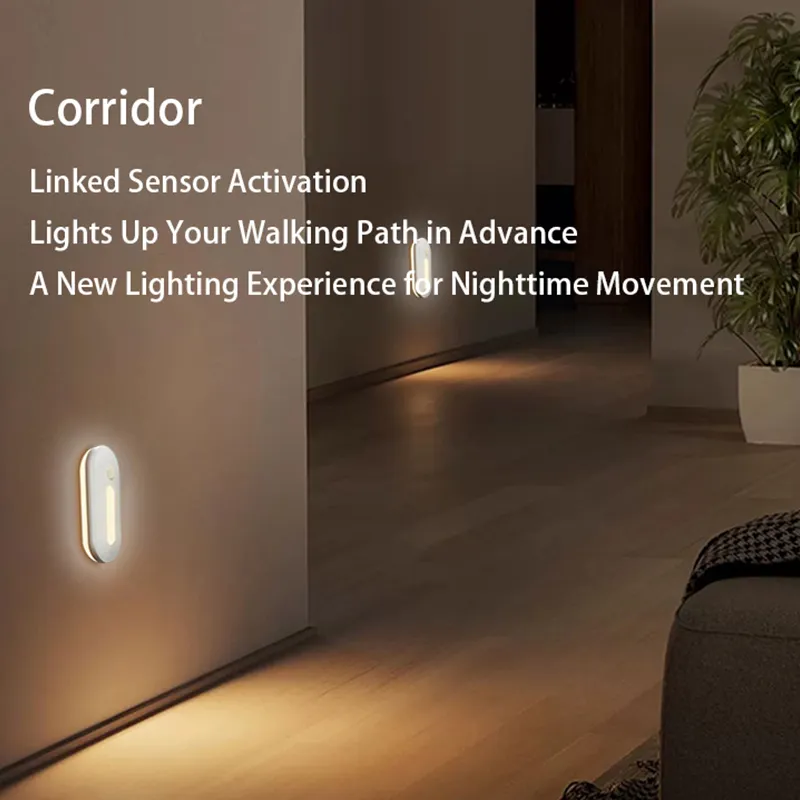How long can a motion-activated LED light stay active?
Whether in hallways, stairways, kitchens, or bathrooms, motion-activated LED lights automatically turn on when they sense human movement, providing convenience and safety.
A common question for many users is, "How long does a motion-activated LED light stay on?" This question not only concerns the lighting's configuration parameters but also its actual user experience and energy efficiency.

What is a motion-activated LED light?
A motion-activated LED light primarily consists of an LED light source, a sensor module, a control circuit, and a power supply. Its core operating mechanism is: when the built-in sensor detects motion by a person or object in the environment, the control circuit triggers the LED light source to illuminate. After a certain period of no motion, the system automatically turns off the LED light.
Among various sensors, infrared (PIR) sensors and microwave sensors are the two most widely used. Infrared sensors detect infrared radiation emitted by a person to determine motion, while microwave sensors use reflected echo signals to determine motion. Regardless of the technology used, motion-activated LED lights operate by sensing and responding to motion in the environment in real time, enabling automatic on/off switching.
What does the activation state of a motion-activated LED light mean?
——When discussing the question, "How many seconds does a motion-activated LED light stay on in its activation state?" It's important to clarify the concept of "activation state."
Typically, when a motion-activated LED light detects valid motion, it enters its activation state, immediately illuminating the light for a set duration. The duration of this duration depends primarily on the user-set delay parameter and is also affected by a variety of factors, including sensor response, environmental conditions, and power supply status.
How long does a motion-activated LED light remain in its activation state?
The activation duration of a motion-activated LED light—the duration the light remains on after detecting motion—is not a fixed value but is controlled by a variety of factors. These factors will be discussed in detail below.
1. User-Set Delay Parameters
Most motion-activated LED lights offer a time delay setting. Users can customize the delay parameters according to actual needs, such as setting the light to stay on for 30 seconds, 60 seconds or longer after detecting motion. This setting is mainly achieved through the built-in control circuit. Common delay parameters include:
(1) Short delay setting:10 seconds to 30 seconds
This setting is suitable for areas such as corridors and stairs. Users only need to light up briefly to pass through, and then the light will turn off quickly, which not only ensures safety but also saves energy.
(2) Medium delay setting: 30 seconds to 60 seconds
Mostly used in places such as kitchens and bathrooms that require longer lighting time, and can meet the lighting needs of users when preparing food or doing daily cleaning.
(3) Long delay setting: 60 seconds or more
Suitable for some special scenes that require continuous lighting, ensuring that the light will not turn off frequently during long activities to avoid affecting the user experience. By adjusting the delay parameters, users can flexibly control the lighting time of the motion-activated LED light in the activated state to meet the needs of different scenarios.
2. Sensor sensitivity and response speed
The sensor sensitivity of the motion-activated LED light is one of the important factors affecting the duration of its activation state. Sensor sensitivity determines how quickly a light responds to motion detection and how quickly it turns off when there's no motion. If the sensitivity is too high, the light may be triggered frequently by minor disturbances (such as wind or pet movement), but it may also turn off too quickly when there's no motion. Conversely, insufficient sensitivity may cause the light to respond slowly, affecting the lighting effect.
Adjusting the sensor sensitivity allows the motion-activated LED light to stay on longer after detecting human activity while preventing it from accidentally turning off due to environmental interference. Users can adjust the sensing distance, angle, and sensitivity parameters to achieve the desired effect.
3. Ambient Light and External Interference
Some motion-activated LED lights have built-in light sensors that detect ambient light intensity. When there's sufficient ambient light, the light may automatically turn off, while turning on again when there's less light. Therefore, ambient light is a key factor affecting the duration of the light's activation state. Sudden bright light in the environment can cause the light to misjudge the ambient brightness and turn off prematurely. Furthermore, external interference such as wind, swaying tree shadows, and indoor temperature fluctuations can affect sensor judgment and thus affect the duration of the light's activation.
For this reason, when installing motion-activated LED lights, choose an area with stable lighting and no strong interference, or adjust the light sensor's trigger threshold to ensure the light remains on when needed.
4. Power Supply and Battery Charge
The power supply status is crucial to the proper operation of motion-activated LED lights. For battery-powered devices, if the battery charge is low, the light may not maintain the set duration and may even flicker or turn off prematurely. Conversely, for lights connected directly to a power source, voltage stability also directly affects their operating time. Large fluctuations in the power supply voltage can cause unstable control circuitry, shortening the duration of the activation state.

Common Activation Time Settings for Motion-Activated LED Lights
On the market, the activation time of motion-activated LED lights can typically be adjusted freely between 10 seconds and several minutes. The following describes several common settings and their applicable scenarios for consumers to consider when selecting and using them.
1. Short Activation Setting (10-30 seconds)
This setting is commonly used in areas like hallways, stairways, and foyers. These areas are frequently used, and people passing through them only need a brief illumination transition. Setting a short delay not only allows for quick motion response but also allows for quick shutoff when no one is around, saving energy. Specifically:
· If the delay is set to 10 seconds, the motion-activated LED light will illuminate for 10 seconds after detecting motion and automatically shut off if there is no further movement during that time.
· A delay setting of 20 to 30 seconds can meet the need for transitional lighting over slightly longer distances, especially in areas like hallways. It ensures safety while avoiding energy waste caused by prolonged lighting.
2. Medium Activation Setting (30-60 seconds)
For areas like kitchens, bathrooms, and bedrooms, users often prefer continuous illumination during extended periods of activity. A medium delay setting allows the motion-activated LED light to continue providing illumination after entering the area until the user completes their activity. A setting between 30 and 60 seconds can accommodate brief daily activities while avoiding the inconvenience of frequent light switching off.
For example, when preparing food in the kitchen, users may require continuous lighting for a period of time. A medium delay setting ensures that motion-activated LED lights remain on during this period.
3. Long-Term Activation Setting (60 seconds or longer)
Long-term activation settings are suitable for special scenarios or large areas, such as garages, basements, and specific commercial environments. In these areas, users require extended lighting after entering the area and do not want to repeatedly turn lights on and off due to short delays. While long-term settings are less common in homes, delays longer than 60 seconds can be a reasonable solution for areas with specific needs.

How to choose the appropriate activation time for different scenarios?
Choosing the right activation time requires considering the function of the space, the area, the frequency of activity, and the user's personal habits. Below are some professional suggestions to help consumers choose the appropriate delay setting based on their specific needs.
1. Hallways and Stairways
Hallways and stairways are among the most common areas for motion-activated LED lights. These areas typically require short-distance transitional lighting, requiring only brief illumination when users pass through. Recommendations:
· Set a short-duration activation mode with a delay between 10 and 30 seconds;
· Adjust the sensor angle to cover the entire corridor, ensuring the light responds promptly when users pass through;
· Avoid setting excessively long activation times to avoid wasting energy when no one is around.
2. Kitchen and Bathroom
Due to the small size and high activity levels in kitchens and bathrooms, the stability and continuity of lighting should be considered when using motion-activated LED lights. Recommendations:
· Select a medium-duration activation setting with a delay between 30 and 60 seconds;
· Adjust the sensor sensitivity so that the lights can continuously respond to user activity during cooking in the kitchen or bathroom;
· Ensure a stable power supply to avoid premature shutdown due to voltage fluctuations.
3. Auxiliary Lighting in Bedrooms and Living Rooms
Motion-activated LED lights are often used as auxiliary lighting in bedrooms and living rooms. They should automatically illuminate and stay on for an appropriate period of time when users get up at night or require localized illumination. Recommendations:
· Set a short to medium delay (20 to 40 seconds) based on the area's needs, ensuring adequate lighting without disturbing sleep.
· If using motion sensors in bedrooms to prevent nighttime falls, the delay can be extended appropriately, while also ensuring it doesn't disturb others' sleep.
· Adjust light brightness to provide adequate visibility at low brightness levels to ensure safety.
4. Large Areas and Special Areas
For large areas such as garages and basements, motion-activated LED lights may need to remain on for a longer period of time after activation to accommodate users performing tasks or activities over extended periods. Recommendations:
· Choose a longer activation setting based on the area and duration of activity, with a delay of 60 seconds or longer.
· Ensure the sensor's sensing range covers the entire area to avoid frequent lighting shutdowns due to blind spots.
· Adjust the mounting height and angle to ensure adequate illumination in every corner of a large area.

Is it possible to get discounted LED lighting prices for large orders?
Of course. We provide tiered pricing structures for bulk orders. The larger the quantity, the more significant the discount. We also offer seasonal promotions and loyalty pricing for repeat buyers.
Whether you’re sourcing 5,000 LED bulbs or 50,000 panel lights, we’ll offer you the best price from our China-based LED lighting factory. Contact us!
